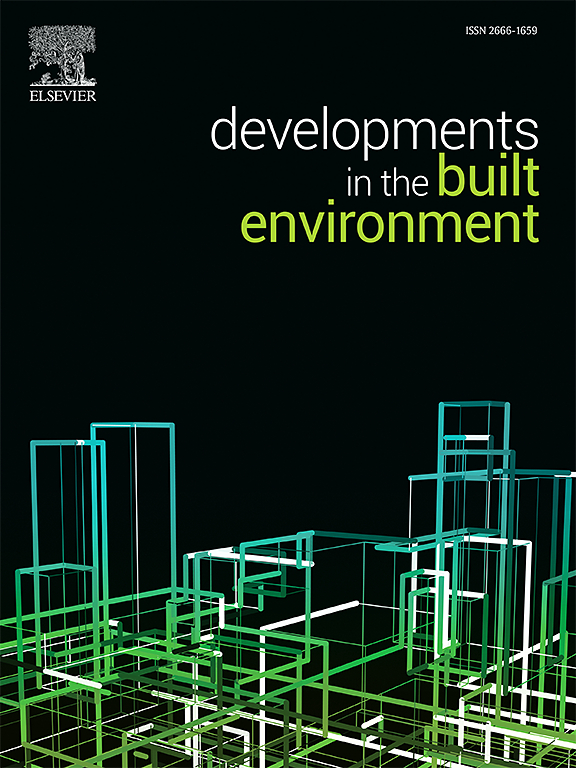BIM在建筑项目中的应用模式:中国的动机和能力的聚类分析
IF 8.2
2区 工程技术
Q1 CONSTRUCTION & BUILDING TECHNOLOGY
引用次数: 0
摘要
由于其促进建筑环境可持续发展的巨大潜力,采用BIM作为一种系统创新与嵌入在异构能力背景下的复杂效率-合法性动机有关。从配置角度出发,本研究旨在探讨不同维度的内在动机和能力背景如何同时配置为建筑项目中BIM采用的不同模式,并导致不同的绩效结果。基于对中国基于项目的BIM采用数据的聚类分析,结果为四种具有显著不同激励-能力配置的BIM采用模式提供了有力证据:效率激励模式、战略激励模式、多激励模式和低激励模式。虽然战略驱动和多驱动模式是最常用的两种模式,但效率驱动模式在BIM实施程度和成功程度上都表现出最高水平,这表明在外部制度环境的影响下,采用BIM作为一种备受瞩目的数字技术已经成为一种高度制度化的经济努力。本研究有助于加深理解创新作为一种制度化的经济努力如何表现出一贯不同的动机和能力配置,以及如何更有效地管理这些配置,以促进在正在进行的数字化和可持续转型浪潮中,以保守项目为基础的建筑实践中创新解决方案的进步。本文章由计算机程序翻译,如有差异,请以英文原文为准。
BIM adoption modes in construction projects: A cluster analysis of motivations and capabilities in China
With its great potential to facilitate the sustainable development of the built environment, the adoption of BIM as a systemic innovation is associated with complex efficiency-legitimacy motivations embedded in heterogeneous capability contexts. Drawing upon a configuration perspective, this study aims to explore how different dimensions of intrinsic motivations and capability contexts are concurrently configured as different modes of BIM adoption in construction projects and result in varied performance outcomes. Based on the cluster analysis of project-based BIM adoption data in China, the results provide robust evidence for four BIM adoption modes with significantly different motivation-capability configurations: efficiency-motivated mode, strategy-motivated mode, multi-motivated mode, and under-motivated mode. While strategy-motivated and multi-motivated modes are illustrated to be the two most generally used modes, the efficiency-motivated mode exhibits the highest levels of both BIM implementation extent and success, providing evidence that the adoption of BIM as a high-profile digital technology has become a highly institutionalized economic endeavor under the impacts of external institutional environments. This study contributes to a deepened understanding of how innovation adoption as an institutionalized economic endeavor could exhibit consistently different motivation and capability configurations and how such configurations could be more efficiently managed to foster a healthier paradigm for the advancements of innovative solutions in the conservative project-based construction practices during the ongoing digital and sustainable transformation wave.
求助全文
通过发布文献求助,成功后即可免费获取论文全文。
去求助
来源期刊

Developments in the Built Environment
Multiple-
CiteScore
7.40
自引率
1.20%
发文量
31
审稿时长
22 days
期刊介绍:
Developments in the Built Environment (DIBE) is a recently established peer-reviewed gold open access journal, ensuring that all accepted articles are permanently and freely accessible. Focused on civil engineering and the built environment, DIBE publishes original papers and short communications. Encompassing topics such as construction materials and building sustainability, the journal adopts a holistic approach with the aim of benefiting the community.
 求助内容:
求助内容: 应助结果提醒方式:
应助结果提醒方式:


